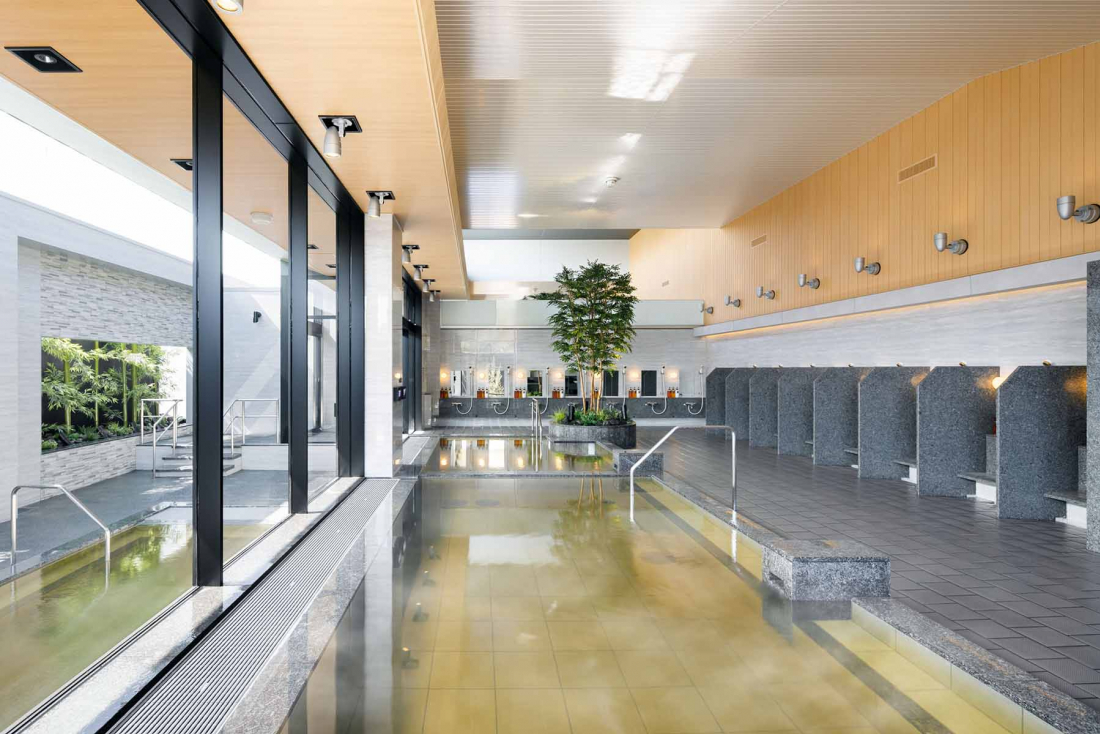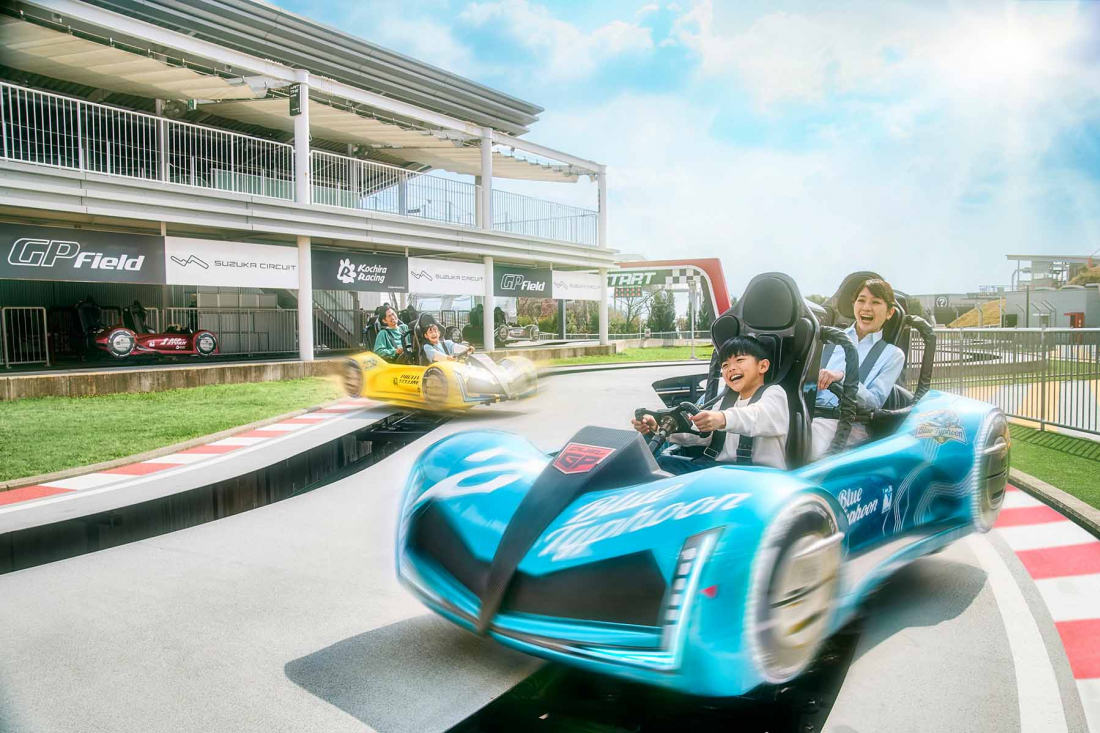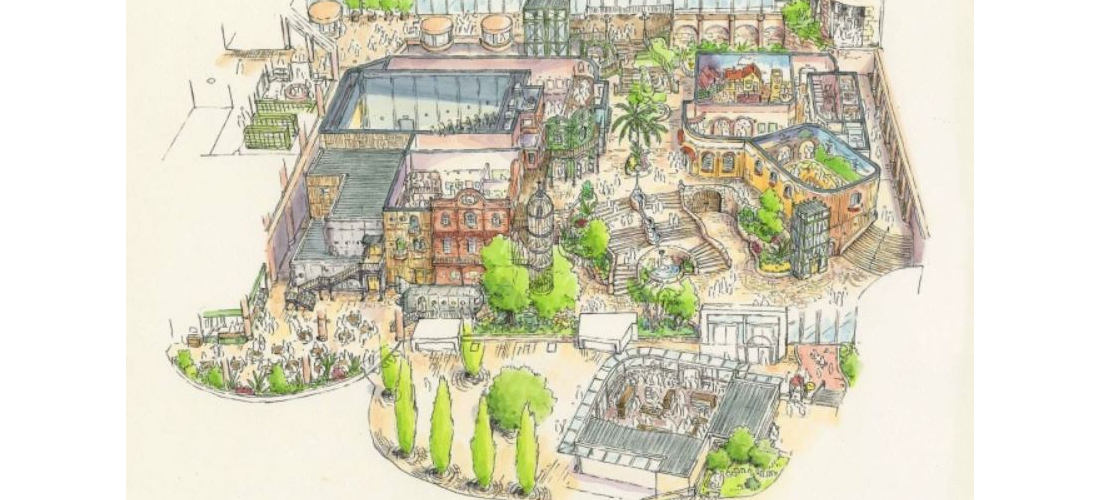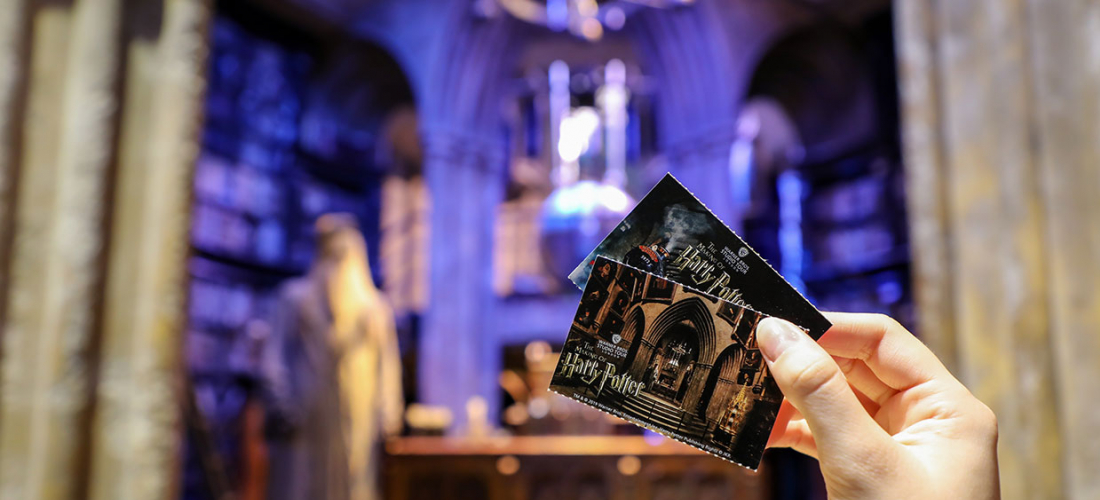
Suzuka Circuit is already a beloved racetrack as host of the Formula 1 Japan Grand Prix, and the theme park’s rides and attractions are bound to create some new racetrack fans of all ages! Located near Nagoya, make the trip with friends and family to enjoy the thrills of the world of motorsports, plus hot springs, great food, and their unique hotel!
CONTENTS
Suzuka Circuit Theme Park: Make Your F1 Racing Dreams Come True
The first full-scale standard international racing course in Japan, Suzuka Circuit was completed in 1962, and has been in use for major events ever since. Thanks to some wicked turns and unique flow, the track itself is a fan favorite in the world of Formula 1. To this day, famous racers can be seen around the course or walking over from the on-site hotel, prepping for the Formula 1 Japanese Grand Prix or the "Suzuka 8 Hours", an 8-hour endurance race for motorcyclists.
The average traveler, however, might be even more excited by the Suzuka Circuit theme park,
a mobility-themed motor sports theme park built alongside the Suzuka track in more recent years, complete with an attached hotel and onsen resort. From attractions that let you hurtle down a real racetrack in mini race cars to the feel of real racetrack wind speeds in the museum area, the attractions are made so that visitors of all ages can experience the fun of being a racecar driver.
Access: Mie Transportation bus/taxi from Shiroko Station
Official Website (en)
Ready, Set, Go, on the F1 Japan Grand Prix Racecourse
Circuit Challenger is perhaps the most iconic ride of the Suzuka Circuit theme park, offering visitors a taste of all the excitement felt on the F1 Japan Grand Prix racecourse. Suzuka Circuit teamed up with pro racer Takuma Sato (acting as project advisor) to create an attraction that lets racing fans of all ages speed along the real Suzuka racetrack for an authentic racing experience, whipping by in safe, easy-to-operate electric racing karts. Instructions are given in whatever language you're most comfortable with, so even inexperienced drivers can grab the wheel with confidence. Guests two and older can ride along, nine-year-olds can try their hand at driving, and drivers 13 and up can take a car out for a lap on their own! But it's especially fun to pile two or three people into the racecars and go around the track together.
Before heading out onto the track, each driver gets a card that can record data from the drive. Just climb into your racing kart, insert the card key, and follow the instructions from the navigation system (available in Japanese, English, and Chinese) to drive like a pro. When the race is over, you can check your score and earn a "license". On our last ride, our driving only earned a C. We'll have to work on our driving skills next time!
The First Motorcycle-Style Coaster in Japan
The F1 Japan Grand Prix isn't the only major race at Suzuka Circuit, and one look at the motorcycles that speed around the circuit is enough to get your blood pumping. If you've ever longed to hop on a motorcycle and take some turns at blinding speeds, a ride on Suzuka Circuit's GP Racers attraction is a must. Visitors of all ages can hop on GP Racers to get a real feel for the speed and g-forces of a motorcycle race, with heavy cars and tight corners that let you bank like a pro. A part of the track even loops right by the actual Suzuka Circuit, so you can see the historic racetrack that hosts the F1 Japanese Grand Prix and the Suzuka 8 Hours from high in the air as you zip past on a "motorcycle" of your own. For memories you can take home, the roller coaster's path also goes right by a viewing platform, making it easy for anyone to snap a few pictures.
The two-seater motorcycle-style cars come in six different colors with lightcycle-esque LED accents, for a design that makes them look both retro and futuristic. The ride looks and feels like you're riding a motorcycle, but thankfully the design keeps you safely in your seat while you race through the air.
Go-Karts Turn the Racetrack Mini
The "Putti Town Circuit" is a mini version of the Suzuka Circuit racecourse itself, and you can do loops around the track by joining in on the Putti Grand Prix. Kids three and older can ride, and kids seven and older can drive themselves without any help, although we still think it's extra fun to have a passenger alongside to cheer you on!
A Buzzing Hive in the Sky
Bun Bun Bee is popular among younger kids and families, but it's a nice relaxing break for park visitors of all ages. If you'd like to float through the sky carried along by friendly buzzing bees, you can sit yourself down in one of the ride's honey-yellow seats.
Nearby, the "Potager Garden" is full of giant fruit and vegetable decorations, letting kids feel like they've been shrunk to the size of a hungry bee as they explore the "Garden Maze Potagenne." Luckily, adults are allowed in to explore as well!
Pizza by the Racecourse
There are quite a few places to eat, snack, and drink around the Suzuka Circuit theme park. Stalls sell small bites like caramel corn, yakisoba, or ice cream stuffed crepes. For sit-down meals, you can head to the super-cute Bun Bun Pancake Shop, or grab some Western-style Japanese food at Putti Town Kitchen. This time, though, we decided to treat ourselves to pizza at Course-Side Pizzeria Grand View, which is built along the Suzuka Circuit for a great view of the track! There's a deck outside the restaurant, but larger groups might want to reserve private "box seats." No matter where you sit, you get a pretty good view of the racetrack, and any race cars that might be going by.
Stay the Night in Racetrack Guest Rooms
Not only does Suzuka Circuit have a whole theme park, but it also has a whole resort area with a themed hotel, restaurant, and even onsen spa facilities, which makes it especially convenient for families traveling with young kids. Originally designed to accommodate the drivers and teams that came to the racetrack for large international events, the Suzuka Circuit Hotel is now a perfect place for guests to stay after a full day at the circuit, with unique racing-themed rooms that accommodate groups of different sizes. Some of them have racetrack-style bedspreads and bucket seat chairs designed in collaboration with German automobile seat manufacturer RECARO, or bed headboards shaped like race car wheels! In the area of the hotel called THE MAIN, the "Grand Maisonette'' rooms even have a loft area with extra sleeping space.
In addition to the comfortable hotel, the restaurant space called "THE DINING" uses locally-grown ingredients from Mie Prefecture to offer a mix of Japanese, Chinese, and Western cuisine.
To soak away all the fatigue of a fun day at the theme park, try Suzuka Circuit's onsen facilities called "THE SPA." The large open baths and steaming hot water will leave you feeling refreshed and ready for another fun day in Japan!
The warm wooden structure and floor-to-ceiling windows of THE SPA offer an inviting spa retreat at the end of the day!
Plan a Trip to the Suzuka Circuit Theme Park
Suzuka Circuit is easily accessible from Nagoya, so it's easy to add a couple days at the theme park to the itinerary when traveling in central Japan. Explore the castles and temples of Nagoya, visit the explosively popular Ghibli Park, and learn a little bit about the history of Japanese cars at the Toyota Museum while you're there, then head to Suzuka to see vehicles on a whole new level – and race around the famous track!
Got any questions about planning your trip? Want to tell us about your last trip to central Japan? We'd love to hear from you on the Japankuru twitter, instagram, and facebook!
Details
NAME:Suzuka Circuit (鈴鹿サーキット)
MAP
ACCESS:Shiroko Station
COMMENT
FEATURED MEDIA
VIEW MORE 
A New Tokyo Animal Destination: Relax & Learn About the World’s Animals in Japan
#pr #japankuru #anitouch #anitouchtokyodome #capybara #capybaracafe #animalcafe #tokyotrip #japantrip #카피바라 #애니터치 #아이와가볼만한곳 #도쿄여행 #가족여행 #東京旅遊 #東京親子景點 #日本動物互動體驗 #水豚泡澡 #東京巨蛋城 #เที่ยวญี่ปุ่น2025 #ที่เที่ยวครอบครัว #สวนสัตว์ในร่ม #TokyoDomeCity #anitouchtokyodome

Shohei Ohtani Collab Developed Products & Other Japanese Drugstore Recommendations From Kowa
#pr #japankuru
#kowa #syncronkowa #japanshopping #preworkout #postworkout #tokyoshopping #japantrip #일본쇼핑 #일본이온음료 #오타니 #오타니쇼헤이 #코와 #興和 #日本必買 #日本旅遊 #運動補充能量 #運動飲品 #ช้อปปิ้งญี่ปุ่น #เครื่องดื่มออกกำลังกาย #นักกีฬา #ผลิตภัณฑ์ญี่ปุ่น #อาหารเสริมญี่ปุ่น

도쿄 근교 당일치기 여행 추천! 작은 에도라 불리는 ‘가와고에’
세이부 ‘가와고에 패스(디지털)’ 하나면 편리하게 이동 + 가성비까지 완벽하게! 필름카메라 감성 가득한 레트로 거리 길거리 먹방부터 귀여움 끝판왕 핫플&포토 스폿까지 총집합!
Looking for day trips from Tokyo? Try Kawagoe, AKA Little Edo!
Use the SEIBU KAWAGOE PASS (Digital) for easy, affordable transportation!
Check out the historic streets of Kawagoe for some great street food and plenty of picturesque retro photo ops.
#pr #japankuru #도쿄근교여행 #가와고에 #가와고에패스 #세이부패스 #기모노체험 #가와고에여행 #도쿄여행코스 #도쿄근교당일치기 #세이부가와고에패스
#tokyotrip #kawagoe #tokyodaytrip #seibukawagoepass #kimono #japantrip

Hirakata Park, Osaka: Enjoy the Classic Japanese Theme Park Experience!
#pr #japankuru #hirakatapark #amusementpark #japantrip #osakatrip #familytrip #rollercoaster #retrôvibes #枚方公園 #大阪旅遊 #關西私房景點 #日本親子旅行 #日本遊樂園 #木造雲霄飛車 #히라카타파크 #สวนสนุกฮิราคาตะพาร์ค

🍵Love Matcha? Upgrade Your Matcha Experience With Tsujiri!
・160년 전통 일본 말차 브랜드 츠지리에서 말차 덕후들이 픽한 인기템만 골라봤어요
・抹茶控的天堂!甜點、餅乾、飲品一次滿足,連伴手禮都幫你列好清單了
・ส่องมัทฉะสุดฮิต พร้อมพาเที่ยวร้านดังในอุจิ เกียวโต
#pr #japankuru #matcha #matchalover #uji #kyoto #japantrip #ujimatcha #matchalatte #matchasweets #tsujiri #말차 #말차덕후 #츠지리 #교토여행 #말차라떼 #辻利抹茶 #抹茶控 #日本抹茶 #宇治 #宇治抹茶 #日本伴手禮 #抹茶拿鐵 #抹茶甜點 #มัทฉะ #ของฝากญี่ปุ่น #ชาเขียวญี่ปุ่น #ซึจิริ #เกียวโต

・What Is Nenaito? And How Does This Sleep Care Supplement Work?
・你的睡眠保健品——認識「睡眠茶氨酸錠」
・수면 케어 서플리먼트 ‘네나이토’란?
・ผลิตภัณฑ์เสริมอาหารดูแลการนอน “Nenaito(ネナイト)” คืออะไร?
#pr #japankuru #sleepcare #japanshopping #nenaito #sleepsupplement #asahi #睡眠茶氨酸錠 #睡眠保健 #朝日 #l茶胺酸 #日本藥妝 #日本必買 #일본쇼핑 #수면 #건강하자 #네나이토 #일본영양제 #อาหารเสริมญี่ปุ่น #ช้อปปิ้งญี่ปุ่น #ร้านขายยาญี่ปุ่น #ดูแลตัวเองก่อนนอน #อาซาฮิ

Japanese Drugstore Must-Buys! Essential Items from Hisamitsu® Pharmaceutical
#PR #japankuru #hisamitsu #salonpas #feitas #hisamitsupharmaceutical #japanshopping #tokyoshopping #traveltips #japanhaul #japantrip #japantravel

Whether you grew up with Dragon Ball or you just fell in love with Dragon Ball DAIMA, you'll like the newest JINS collab. Shop this limited-edition Dragon Ball accessory collection to find some of the best Dragon Ball merchandise in Japan!
>> Find out more at Japankuru.com! (link in bio)
#japankuru #dragonball #dragonballdaima #animecollab #japanshopping #jins #japaneseglasses #japantravel #animemerch #pr

This month, Japankuru teamed up with @official_korekoko to invite three influencers (originally from Thailand, China, and Taiwan) on a trip to Yokohama. Check out the article (in Chinese) on Japankuru.com for all of their travel tips and photography hints - and look forward to more cool collaborations coming soon!
【橫濱夜散策 x 教你怎麼拍出網美照 📸✨】
每次來日本玩,是不是都會先找旅日網紅的推薦清單?
這次,我們邀請擁有日本豐富旅遊經驗的🇹🇭泰國、🇨🇳中國、🇹🇼台灣網紅,帶你走進夜晚的橫濱!從玩樂路線到拍照技巧,教你怎麼拍出最美的夜景照。那些熟悉的景點,換個視角說不定會有新發現~快跟他們一起出發吧!
#japankuru #橫濱紅磚倉庫 #汽車道 #中華街 #yokohama #japankuru #橫濱紅磚倉庫 #汽車道 #中華街 #yokohama #yokohamaredbrickwarehouse #yokohamachinatown

If you’re a fan of Vivienne Westwood's Japanese designs, and you’re looking forward to shopping in Harajuku this summer, we’ve got important news for you. Vivienne Westwood RED LABEL Laforet Harajuku is now closed for renovations - but the grand reopening is scheduled for July!
>> Find out more at Japankuru.com! (link in bio)
#japankuru #viviennewestwood #harajuku #omotesando #viviennewestwoodredlabel #viviennewestwoodjapan #비비안웨스트우드 #오모테산도 #하라주쿠 #日本購物 #薇薇安魏斯伍德 #日本時尚 #原宿 #表參道 #japantrip #japanshopping #pr

Ready to see TeamLab in Kyoto!? At TeamLab Biovortex Kyoto, the collective is taking their acclaimed immersive art and bringing it to Japan's ancient capital. We can't wait to see it for ourselves this autumn!
>> Find out more at Japankuru.com! (link in bio)
#japankuru #teamlab #teamlabbiovortex #kyoto #kyototrip #japantravel #artnews
Photos courtesy of teamLab, Exhibition view of teamLab Biovortex Kyoto, 2025, Kyoto ® teamLab, courtesy Pace Gallery

Japanese Makeup Shopping • A Trip to Kamakura & Enoshima With Canmake’s Cool-Toned Summer Makeup
#pr #canmake #enoshima #enoden #에노시마 #캔메이크 #japanesemakeup #japanesecosmetics

⚔️The Robot Restaurant is gone, but the Samurai Restaurant is here to take its place. Check it out, and don't forget your coupon!
🍣신주쿠의 명소 로봇 레스토랑이 사무라이 레스토랑으로 부활! 절찬 쿠폰 발급중
💃18歲以上才能入場的歌舞秀,和你想的不一樣!拿好優惠券去看看~
#tokyo #shinjuku #samurairestaurant #robotrestaurant #tokyotrip #도쿄여행 #신주쿠 #사무라이레스토랑 #이색체험 #할인이벤트 #歌舞伎町 #東京景點 #武士餐廳 #日本表演 #日本文化體驗 #japankuru #japantrip #japantravel #japanlovers #japan_of_insta

Japanese appliance & electronics shopping with our KOJIMA x BicCamera coupon!
用JAPANKURU的KOJIMA x BicCamera優惠券買這些正好❤️
코지마 x 빅 카메라 쿠폰으로 일본 가전 제품 쇼핑하기
#pr #japankuru #japanshopping #kojima #biccamera #japaneseskincare #yaman #dji #osmopocket3 #skincaredevice #日本購物 #美容儀 #相機 #雅萌 #日本家電 #일본여행 #면세 #여행꿀팁 #일본쇼핑리스트 #쿠폰 #일본쇼핑 #일본브랜드 #할인 #코지마 #빅카메라 #japankurucoupon






























































